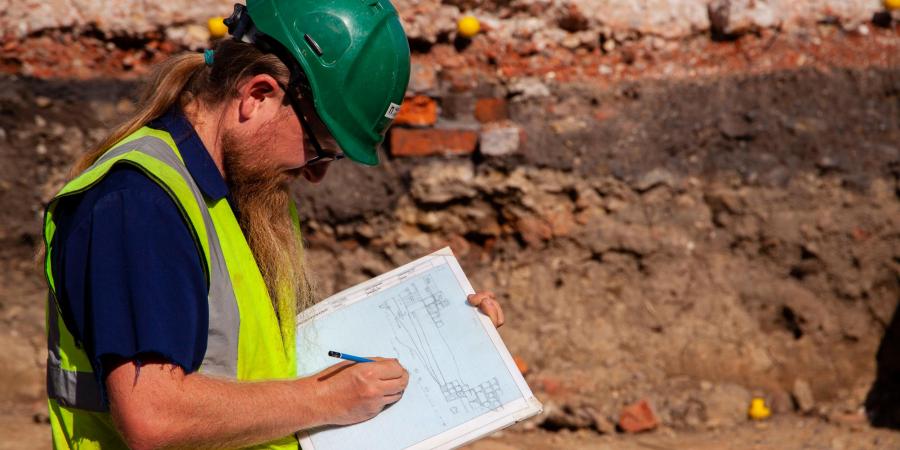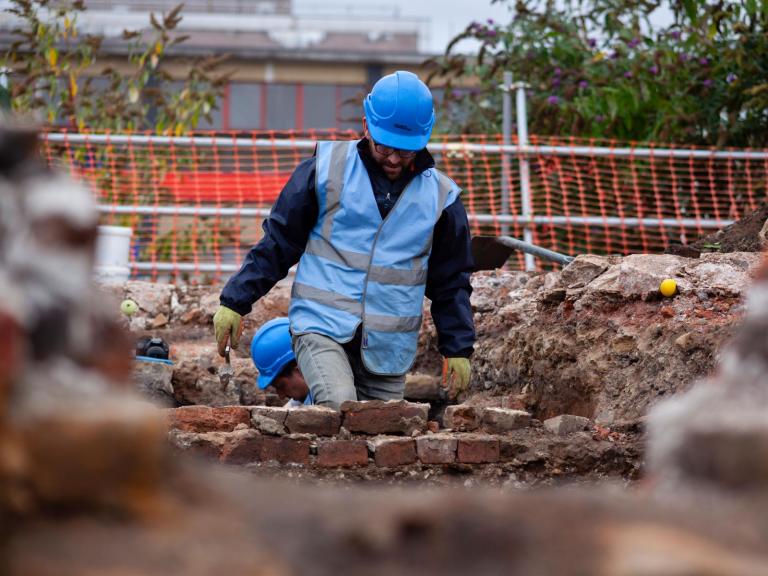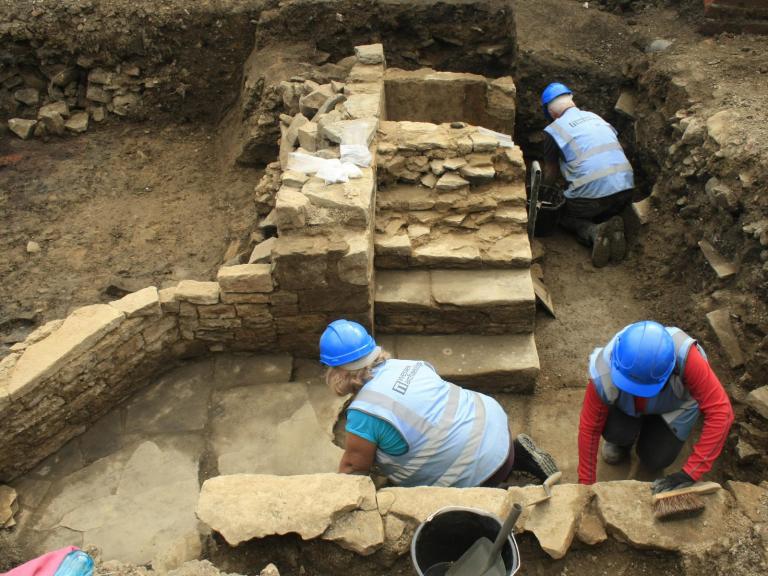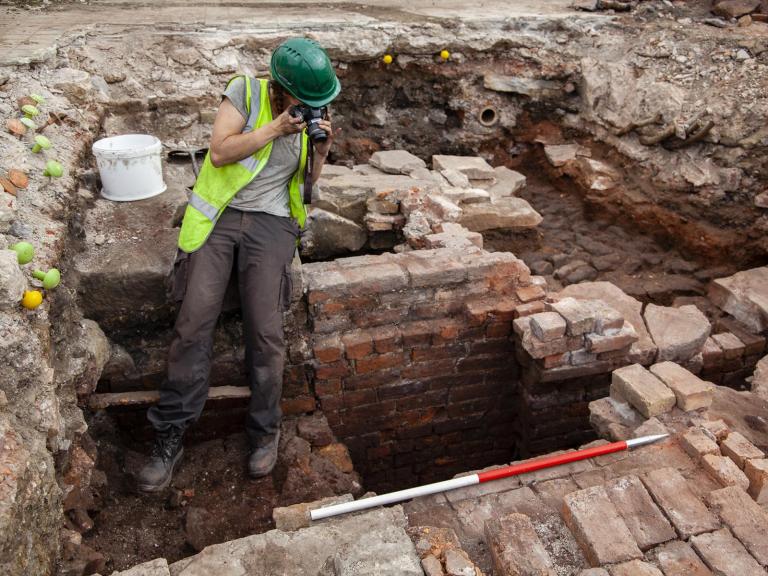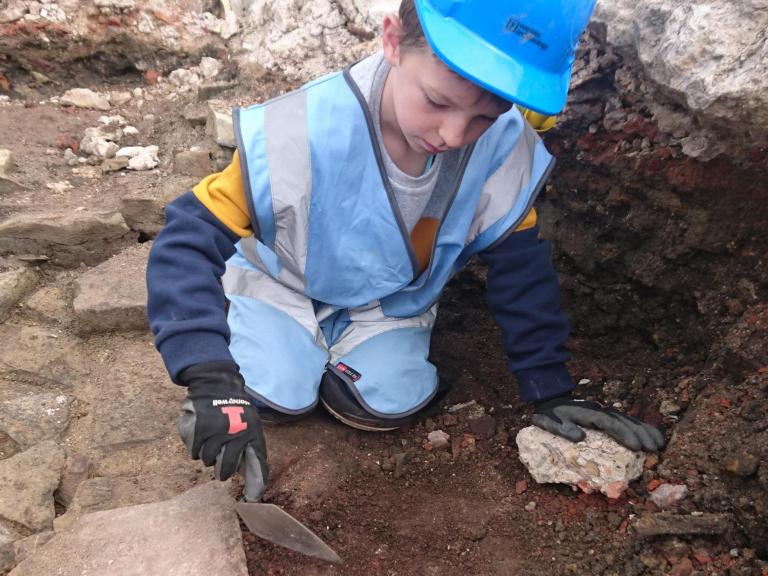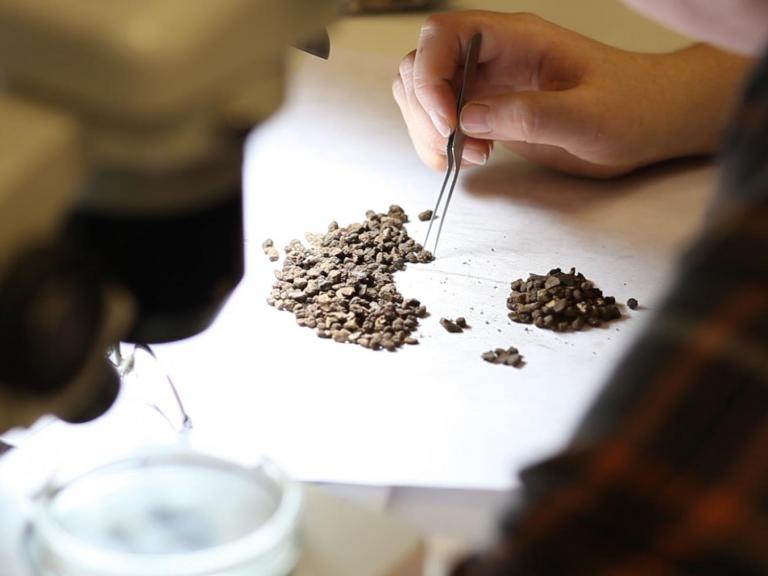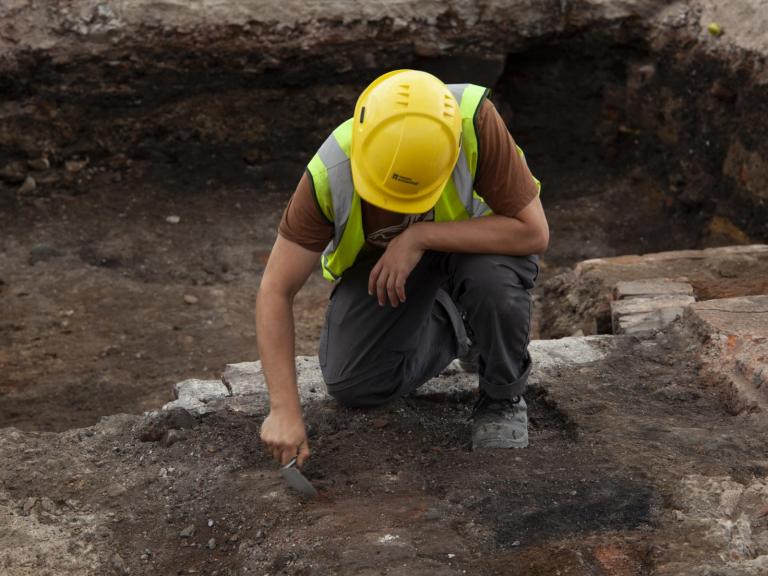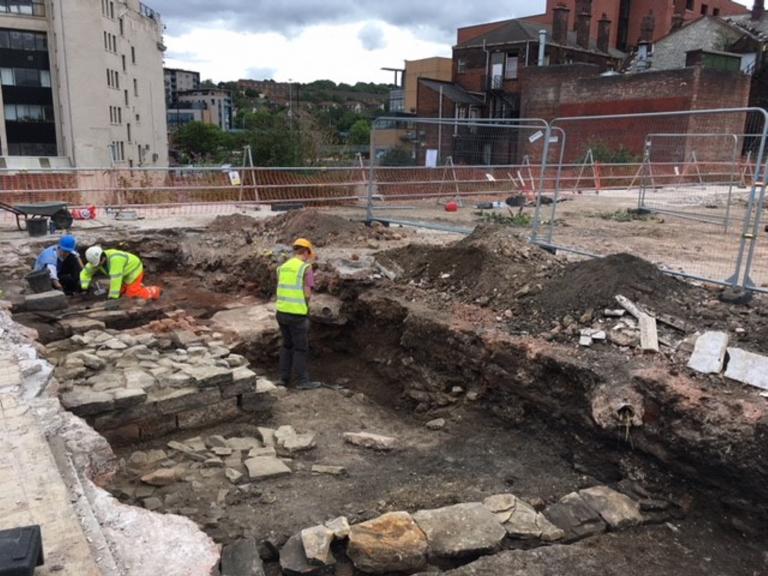We are very much near our finishing line, dear reader. This is our week seven out of nine.
And this week we have taken our protein pills, we have put our helmets on and we are now 4 m below the ground surface, well into the moat layers in the eastern part of the site. From the moat’s fills, we are retrieving large, nicely dressed architectural stones as well as numerous soil samples which will inform us about the dietary habits and the environment of Sheffield in the past. A wall of a south-west to north-east oriented lane, which in the late 18th and 19th centuries ran behind the slaughter houses and joined the Castle Folds Lane and the river Sheaf, was also uncovered and recorded in the trench this week.
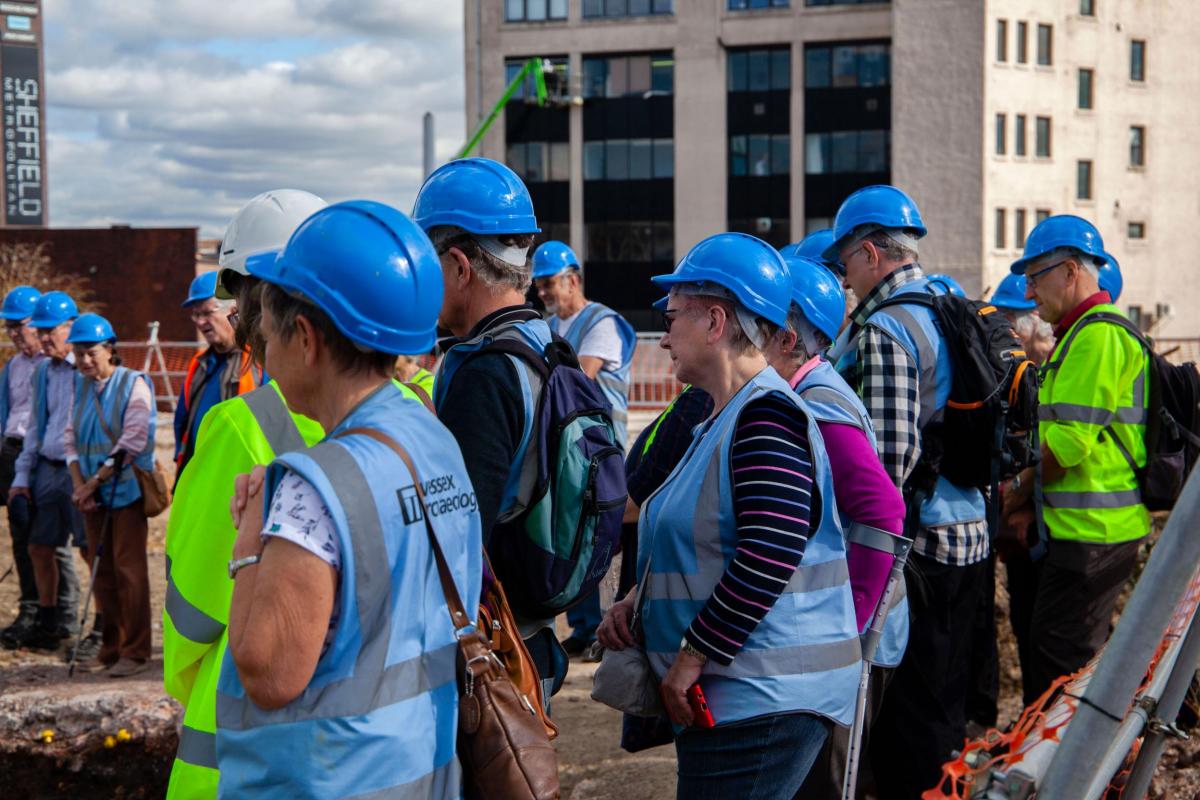
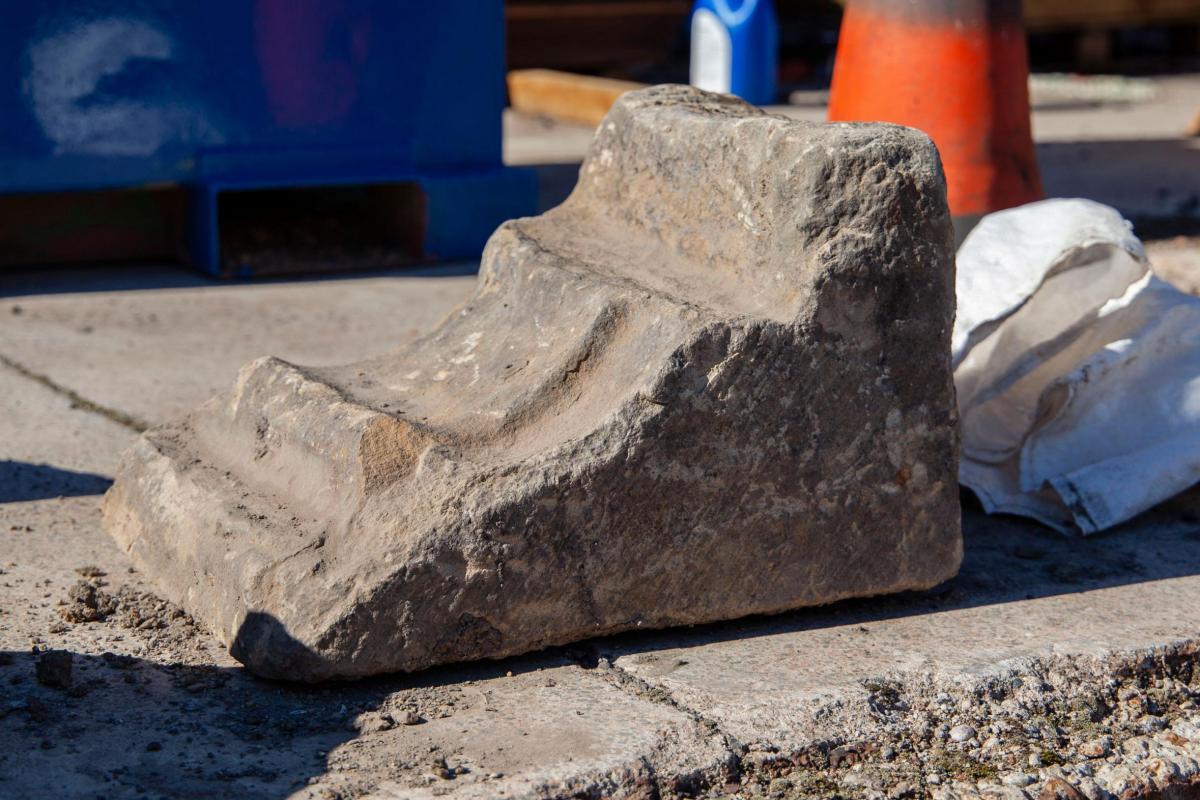
Elsewhere on the site, last week’s small portion of a wood/timber and charcoal-rich layer has turned into a possible floor/surface of medieval date. A large alignment of stones has also been tested further and we are now confident that there are two alignments, possibly two phases to it, possibly of Sheffield’s medieval Castle.
In addition, there are two cobbled floors/yard surfaces – both medieval.
More medieval pottery and fragments of decorative stone have reached our post-excavation office this week. This quantity is only mirrored by the amount of biscuits and tea consumed during well-earned breaks
This week’s work has confirmed evidence of the medieval castle: the stone wall, rich organic layers, cobbled surfaces, the moat and redeposited natural.
There are just two more weeks left on site.
Have a lovely weekend, see you here next Friday.
